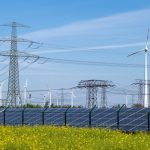Présentation
RÉSUMÉ
Cet article traite de la méthode de collage direct encore nommée adhésion moléculaire en dévoilant les phénomènes et les mécanismes qui permettent d’adhérer sans colle. Il s’intéresse aux cas de la silice et du silicium, car ce sont les matériaux les plus étudiés et physiquement les mieux compris à ce jour. Les points fondamentaux qui autorisent l’adhésion spontanée en termes de qualité (rugosités, planéités), de recouvrement et de propreté des surfaces sont détaillés dans une première partie. Puis les méthodes de caractérisation des forces d’adhésion lors du collage, et de l’adhérence, lors du désassemblage sont explorées. Enfin, les mécanismes physico-chimiques de l’adhérence et les traitements permettant de renforcer la tenue des assemblages sont décrites.
Lire cet article issu d'une ressource documentaire complète, actualisée et validée par des comités scientifiques.
Lire l’articleAuteur(s)
-
Aurélien MAUREL-PANTEL : Maître de Conférence - Aix-Marseille Université, CNRS, Centrale Marseille, LMA, Marseille, France
-
Frank FOURNEL : Directeur de recherche - CEA LETI, CEA, Grenoble, France
-
Thierry BILLETON : Ingénieur - Laboratoire de physique des lasers (LPL UMR7538), CNRS, Villetaneuse, France
-
Jérôme DEBRAY : Ingénieur - Institut Néel (UPR2940), Université Grenoble Alpes, CNRS, Grenoble INP, Grenoble, France
-
Christophe HECQUET : Ingénieur - Laboratoire Charles Fabry (LCF UMR8501), CNRS, Palaiseau, France
-
Anne TALNEAU : Directrice de recherche - Centre de Nanosciences et de Nanotechnologies (C2N UMR9001), CNRS, Palaiseau, France
-
Frédéric LEBON : Professeur - Aix-Marseille Université, CNRS, Centrale Marseille, LMA, Marseille, France
INTRODUCTION
La technologie du collage direct, aussi appelée adhésion moléculaire, est un type très particulier d’assemblage. Sa définition la plus concise semble être : « un collage spontané sans l’ajout de liquide épais ». Le fait de ne pas ajouter de liquide implique surtout l’absence d’utilisation de colle liquide polymère. C’est un assemblage sans colle ! Le fait qu’il soit « spontané » implique que l’assemblage des deux surfaces permet de gagner de l’énergie, afin de propager le collage direct.
L’énergie que le système possède à sa disposition pour coller est « l’énergie d’adhésion ». Elle est à opposer à l’énergie d’adhérence (autrement appelée « énergie de collage ») qui représente l’énergie nécessaire pour séparer les surfaces assemblées. L’énergie d’adhésion est, quant à elle, l’énergie qui aide à les rapprocher.
Dans le cadre du collage direct, pour permettre un collage spontané, il est nécessaire que l’énergie d’adhésion soit plus importante que le coût énergétique nécessaire au rapprochement des surfaces, c’est-à-dire plus grande que l’énergie élastique de déformation induite par le fait que les surfaces à assembler vont se toucher et se rapprocher le plus possible, en se déformant au besoin. Il est donc nécessaire d’avoir des surfaces très proches, généralement à une distance de l’ordre du nanomètre. À cette échelle, les forces intermoléculaires entre les deux surfaces peuvent entrer en action. C’est pour cela que la technique est aussi nommée « adhésion moléculaire ». Le collage direct peut être réalisé grâce aux forces de van der Waals, aux liaisons hydrogènes et, dans certains cas, aux forces capillaires : ces forces sont le moteur du collage direct. L’énergie mécanique de déformation, dépensée pour rapprocher les surfaces, en est le frein.
L’article se focalise, pour des raisons de simplicité, sur le collage direct de la silice fondue. Ce moteur et ce frein sont largement détaillés, ce qui permet de présenter les mécanismes de l’adhésion, et les critères à respecter en termes de spécifications de surface, ou d’environnement, pour réaliser l’adhésion. L’énergie d’adhérence conditionne, quant à elle, la tenue mécanique de l’interface. Dans la dernière partie, elle est décrite en détaillant les techniques qui permettent de la maximiser.
MOTS-CLÉS
adhésion Adhérence Silice Silicium assemblage collage direct
DOI (Digital Object Identifier)
CET ARTICLE SE TROUVE ÉGALEMENT DANS :
Accueil > Ressources documentaires > Génie industriel > Métier : responsable bureau d'étude/conception > Matériaux à propriétés mécaniques > Collage direct - Assemblage sans adhésif pour environnements extrêmes > Conclusion
Cet article fait partie de l’offre
Matériaux fonctionnels - Matériaux biosourcés
(207 articles en ce moment)
Cette offre vous donne accès à :
Une base complète d’articles
Actualisée et enrichie d’articles validés par nos comités scientifiques
Des services
Un ensemble d'outils exclusifs en complément des ressources
Des modules pratiques
Opérationnels et didactiques, pour garantir l'acquisition des compétences transverses
Doc & Quiz
Des articles interactifs avec des quiz, pour une lecture constructive
Présentation
4. Conclusion
Cet article montre l’importance de l’énergie d’adhésion dans le processus de collage direct de deux surfaces de silice ou de silicium. Pour que ces deux surfaces s’assemblent spontanément, il est nécessaire que des forces attractives existent entre elles. Ces forces peuvent être de type van der Waals, liées à des liaisons hydrogène ou covalentes, mais à faible densité. Cependant, dans tous les cas, ces forces d’adhésion restent faibles, et, pour fonctionner, le collage direct nécessite des surfaces très lisses à l’échelle atomique.
La rugosité de surface joue donc un rôle déterminant dans le collage moléculaire : elle détermine la densité des interactions à courte distance entre les aspérités des surfaces. La préparation des surfaces de collage implique un polissage et un nettoyage minutieux, pour éliminer les contaminations et obtenir des surfaces hydrophiles. Les différentes étapes de polissage des surfaces, notamment l’ébauchage, le doucissage, et le polissage, visent, chacune à leur tour, à réduire la rugosité, et à garantir la planéité nécessaire pour un collage direct efficient. Le contrôle de cette planéité est essentiel pour assurer une adhésion optimale. Il existe plusieurs méthodes expérimentales pour mesurer la planéité, la plus commune étant la mesure par interférométrie.
L’énergie d’adhésion est l’énergie qui nous aide à rapprocher les surfaces à coller. La mesure de l’énergie d’adhésion est faite généralement par la mesure de la vitesse de l’onde de collage. Cette mesure est un indicateur de la qualité de l’adhésion. L’énergie d’adhérence (aussi appelée énergie de collage) est l’énergie nécessaire pour séparer les surfaces assemblées. L’énergie d’adhérence joue un rôle essentiel dans le processus de collage : elle détermine la tenue mécanique des assemblages collés. Et pour un assemblage par collage direct optimal, il est déterminant d’augmenter cette énergie d’adhérence.
Plusieurs méthodes de renforcement de l’énergie d’adhérence sont discutées, notamment le recuit thermique, les traitements plasma et l’utilisation d’agents d’activation chimique tels que l’amino-alcool. Le recuit thermique permet d’augmenter l’adhérence en favorisant la création...
Cet article fait partie de l’offre
Matériaux fonctionnels - Matériaux biosourcés
(207 articles en ce moment)
Cette offre vous donne accès à :
Une base complète d’articles
Actualisée et enrichie d’articles validés par nos comités scientifiques
Des services
Un ensemble d'outils exclusifs en complément des ressources
Des modules pratiques
Opérationnels et didactiques, pour garantir l'acquisition des compétences transverses
Doc & Quiz
Des articles interactifs avec des quiz, pour une lecture constructive
Conclusion
BIBLIOGRAPHIE
-
(1) - WALLIS (G.), POMERANTZ (D.I.) - Field Assisted Glass-Metal Sealing. - In Journal of Applied Physics, 40(10), p. 3946‑3949 (1969). – 10.1063/1.1657121
-
(2) - NESE (M.), HANNEBORG (A.) - Anodic bonding of silicon to silicon wafers coated with aluminium, silicon oxide, polysilicon or silicon nitride. - In Sensors and Actuators A: Physical, 37, p. 61‑67 (1993). – 10.1016/0924-4247(93)80013-7
-
(3) - RIEUTORD (F.), MORICEAU (H.), BENEYTON (R.), CAPELLO (L.), MORALES (C.), -CHARVET (A.-M.) - Rough Surface Adhesion Mechanisms for Wafer Bonding. - In ECS Transactions, 3(6), p. 205‑215 (2006). – 10.1149/1.2357071
-
(4) - BEURTHE (C.) - La fabrication des composants en verre optique. - In Photoniques, 69, p. 40‑43 (2014). – 10.1051/photon/20146940
-
(5) - WOLF (S.), TAUBER (R.N.) - Silicon processing for the VLSI era. Vol. 4: Deep-Submicron process technology. - Lattice Pr (2002).
-
...
DANS NOS BASES DOCUMENTAIRES
-
Théorie du contact de Hertz – Contacts ponctuels ou linéiques.
-
Collage direct – Propriétés mécaniques et applications de l’assemblage par collage direct.
ANNEXES
Construction of a Fabry Perot interferometer (etalon) GB312534A
Improvements in or relating to lasers GB1017248A
HAUT DE PAGE2.1 Constructeurs – Fournisseurs – Distributeurs (liste non exhaustive)
P0.DE.O Polishing and Design for Optics, 13510 Eguilles, France http://www.podeo-optiques.fr/
BERTIN WINLIGHT, 84120 Pertuis, France https://www.bertin-winlight.fr/
FICHOU HEF Photonics, 94260 Fresnes, France https://optique-fichou.com/
CEA-Leti, 38054 Grenoble, France https://www.leti-cea.fr/cea-tech/letithal
SESO large precision optics and systems by Thales, 13290 Aix en Provence, France http://www.seso.com/
SOITEC, 38190 Bernin, France https://www.soitec.com/fr/
ST-Microelectonics https://www.st.com/content/st_com/en.html
X-Fab,...
Cet article fait partie de l’offre
Matériaux fonctionnels - Matériaux biosourcés
(207 articles en ce moment)
Cette offre vous donne accès à :
Une base complète d’articles
Actualisée et enrichie d’articles validés par nos comités scientifiques
Des services
Un ensemble d'outils exclusifs en complément des ressources
Des modules pratiques
Opérationnels et didactiques, pour garantir l'acquisition des compétences transverses
Doc & Quiz
Des articles interactifs avec des quiz, pour une lecture constructive










